Evidence to Support the History in the Bible
Paul L. Maier, Christian Research Journal (Edited for space)
Ever since scientific archaeology started a century and a half ago, the consistent pattern has been this: the hard evidence from the ground has borne out the biblical record again and again — and again. The Bible has nothing to fear from the spade. There are many more examples that corroborate biblical evidence. The following short list provides only a few of the significant discoveries:
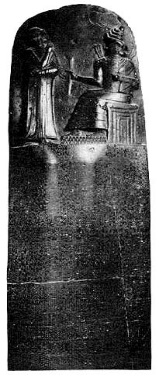 The Code of Hammurabi
The Code of Hammurabi
This seven-foot black diorite stele, presently located in the Louvre museum, contains 282 engraved laws of Babylonian King Hammurabi (fl. 1750 BC). The common basis for this law was a common Semitic law of retribution in the ancient Near East, which is clearlyThe Nuzi Tablets 20,000 clay tablets datable to 1500 BC, reveal institutions, practices, and customs remarkably congruent to those found in Genesis. These tablets include treaties, marriage arrangements, rules regarding inheritance, adoption, and the like. reflected in the Pentateuch. (Exodus 21:23–25)
 The Nuzi Tablets
The Nuzi Tablets
20,000 clay tablets datable to 1500 BC, reveal institutions, practices, and customs remarkably congruent to those found in Genesis. These tablets include treaties, marriage arrangements, rules regarding inheritance, adoption, and the like.
 The Merneptah Stele
The Merneptah Stele
A seven-foot slab engraved with hieroglyphics, also called the Israel Stele, boasts of the Egyptian pharaoh’s conquest of Libyans and peoples in Palestine, including the Israelites: “Israel — his seed is not.” This is the earliest reference to Israel in nonbiblical sources and demonstrates that, as of 1230 BC, the Hebrews were already living in the Promised Land.
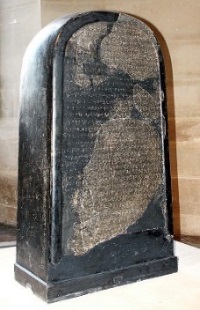 The Moabite Stone
The Moabite Stone
A three-foot stone slab, also called the Mesha Stele, confirms the revolt against Ahab’s family, 850 BC, and that Israel had “perished forever.” (2 Kings 3) reports that Mesha, the king of Moab, rebelled against the king of Israel following the death of Ahab.
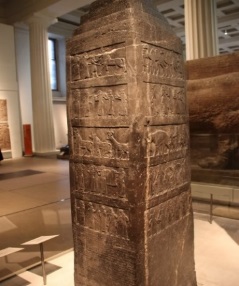 Obelisk of Shalmaneser III
Obelisk of Shalmaneser III
In (2 Kings 9–10), Jehu is mentioned as King of Israel (841– 814 BC) that the growing power of Assyria was already encroaching on the northern kings prior to their ultimate conquest in 722 BC, is demonstrated by a six-and-a-half- foot obelisk discovered in the ruins of the palace at Nimrud in 1846. On it, Jehu is shown kneeling before Shalmaneser III and offering tribute to the Assyrian king, the only relief we have to date of a Hebrew monarch.
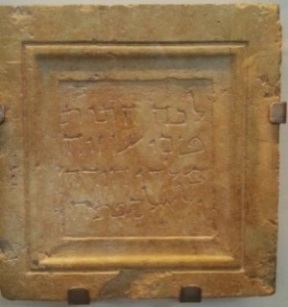 Burial Plaque of King Uzziah
Burial Plaque of King Uzziah
In Judah, King Uzziah ruled from 792 to 740 BC, a contemporary of Amos, Hosea, and Isaiah. Like Solomon, he began well and ended badly. In (2 Chronicles 26) his sin is recorded, which resulted in his being struck with leprosy later in life. When Uzziah died, he was interred in a “field of burial that belonged to the kings.” His stone burial plaque has been discovered on the Mount of Olives.
The Sennacherib Prism
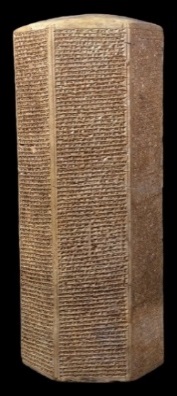 The Prism of Sennacherib is dated to approximately 689 B.C. and contains in its text the annals of King Sennacherib, son of Sargon II, one of the kings of Assyria who reigned from 701-681 B.C. The Prism is believed to have been excavated from the mound at Kuyunjik, at the modern location of Mosul, Iraq. The inscriptions on the object contain the following: On inscribed sides of this clay prism, King Sennacherib recorded eight military campaigns undertaken against various peoples who refused to submit to Assyrian domination. In all instances, he claims to have been victorious. As part of the third campaign, he besieged Jerusalem and imposed heavy tribute on Hezekiah, King of Judah — a story also related in the Bible, where Sennacherib is said to have been defeated by “the angel of the Lord” who slew 185,000 Assyrian soldiers (2 Kings 19) The Prism corroborates the biblical account of Assyria’s invasion of Judah, and subsequent siege of the city of Jerusalem. This event is recorded in the Old Testament in (2 Kings, chapters 18 and 19). This siege took place during the reign of KingHezekiah, who reigned in Judah from approximately 728 to 699 B.C.
The Prism of Sennacherib is dated to approximately 689 B.C. and contains in its text the annals of King Sennacherib, son of Sargon II, one of the kings of Assyria who reigned from 701-681 B.C. The Prism is believed to have been excavated from the mound at Kuyunjik, at the modern location of Mosul, Iraq. The inscriptions on the object contain the following: On inscribed sides of this clay prism, King Sennacherib recorded eight military campaigns undertaken against various peoples who refused to submit to Assyrian domination. In all instances, he claims to have been victorious. As part of the third campaign, he besieged Jerusalem and imposed heavy tribute on Hezekiah, King of Judah — a story also related in the Bible, where Sennacherib is said to have been defeated by “the angel of the Lord” who slew 185,000 Assyrian soldiers (2 Kings 19) The Prism corroborates the biblical account of Assyria’s invasion of Judah, and subsequent siege of the city of Jerusalem. This event is recorded in the Old Testament in (2 Kings, chapters 18 and 19). This siege took place during the reign of KingHezekiah, who reigned in Judah from approximately 728 to 699 B.C.
The Cylinder of Cyrus the Great
(2 Chronicles 36:23 and Ezra 1) Reports that Cyrus the King of Persia, after conquering Babylon, permitted Jews in the Babylonian Captivity to return to their homeland. Isaiah had even prophesied this (Isa. 44:28). This tolerant policy of the founder of the Persian Empire is borne out by the discovery of a nine-inch clay cylinder found at Babylon from the time of its conquest, 539 BC, which reports Cyrus’s victory and his subsequent policy of permitting Babylonian captives to return to their homes and even rebuild their temples.
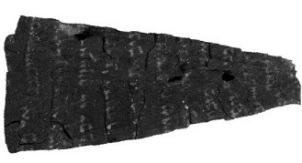
Right: a section of the digitally unwrapped Ein Gedi scroll, bearing text from Leviticus.
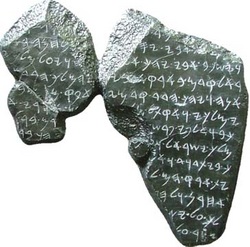 Left: Tel Dan inscription—writing on a ninth-century B.C. stone slab (or stela) that furnished the first historical evidence of the biblical King David.
Left: Tel Dan inscription—writing on a ninth-century B.C. stone slab (or stela) that furnished the first historical evidence of the biblical King David.

Right: Seal bearing the inscription to Shema, servant of Jeroboam, from Megiddo (1 Kings 11:29-40)
 Left; “Western Wall.” A small segment of a retaining wall originally erected as part of the Second Jewish Temple erected by Herod the Great 19 BCE
Left; “Western Wall.” A small segment of a retaining wall originally erected as part of the Second Jewish Temple erected by Herod the Great 19 BCE
Source: www.equip.org/article/biblical-archaeology-factual-evidence-to-support-the-historicity-of-the-bible
Biblical Archaeology
D. Palmer
 What did Jesus say about archaeology? He said during His entry into Jerusalem that “The stones would shout out!” (Luke 19:1-39) As He approached the city, His disciples “with a loud voice for all the deeds of power that they had seen, said, blessed is the king who comes in the name of the Lord! Peace in heaven, and glory in the highest heaven! Some of the Pharisees in the crowd said to him, ‘Teacher, order your disciples to stop.’ Jesus answered, ‘I tell you, if these were silent, the stones would shout out.’”
What did Jesus say about archaeology? He said during His entry into Jerusalem that “The stones would shout out!” (Luke 19:1-39) As He approached the city, His disciples “with a loud voice for all the deeds of power that they had seen, said, blessed is the king who comes in the name of the Lord! Peace in heaven, and glory in the highest heaven! Some of the Pharisees in the crowd said to him, ‘Teacher, order your disciples to stop.’ Jesus answered, ‘I tell you, if these were silent, the stones would shout out.’”
Can we trust the Bible? The answer is an overwhelming YES! If the names, places and events in the Bible are true, wouldn’t it be reasonable and logical to find physical evidence for their existence? So, what archaeological proof is there? You don’t have to look very far because there is plenty!
During the past century, there have been numerous discoveries, small and large, of ancient civilizations that authenticate the biblical scriptures. In addition, there is an abundance of archaeological evidence that validates that the Bible is not a list of legends or myths, but a historical document. There is now a vast collection of attested archaeological evidence of the Hittite civilization from the mid-second millennium BC, and excavated sites of Jericho, Samaria, Shiloh, and Gezer. These are a few of the discovered ancient cities cited in the Bible.
The significance of archaeology to corroborate the biblical text cannot be overstated. Whether it’s inscriptions on discovered tablets or slabs with hieroglyphics, to the skeptic this evidence provides real value that biblical events did in fact happen, authenticating and substantiating the biblical texts. The following examples are only a glimpse into some of the biblical facts archaeology has corroborated. (Biblical texts are in bold)
The Pilate Inscription
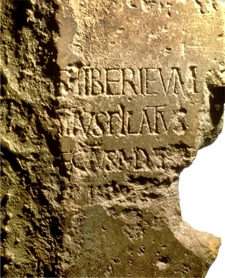 In 1961, the archaeological world was taken back to the first century Roman province of Judea. A group of archaeologists were excavating an ancient Roman theater near Caesarea which was a leading city in the first century located on the Mediterranean Sea. A limestone block was found there with an inscription. The inscription is believed to be part of a larger inscription dedicating a temple in Caesarea to the emperor Tiberius. The inscription clearly states, “Pontius Pilate, Prefect of Judea.” The Roman prefect usually lived in Caesarea and only went to Jerusalem for special purposes. An inscription of Pilate found in Caesarea, fits what is described in the Bible. The dating of the inscription relating to Tiberius (42 BC- 37AD) places the governor Pontius Pilate at the same place and time as the Bible’s information about Jesus. The significance of the Pilate Inscription corroborates the significance of the crucifixion of Jesus. The inscription supports the historical reliability of the cross by supporting the existence of one of its central characters. The Pilate Inscription offers remarkable archaeological testimony that a man named Pontius Pilate once governed Judea. (John 18:38; 19:4,6) (Luke 13:1)
In 1961, the archaeological world was taken back to the first century Roman province of Judea. A group of archaeologists were excavating an ancient Roman theater near Caesarea which was a leading city in the first century located on the Mediterranean Sea. A limestone block was found there with an inscription. The inscription is believed to be part of a larger inscription dedicating a temple in Caesarea to the emperor Tiberius. The inscription clearly states, “Pontius Pilate, Prefect of Judea.” The Roman prefect usually lived in Caesarea and only went to Jerusalem for special purposes. An inscription of Pilate found in Caesarea, fits what is described in the Bible. The dating of the inscription relating to Tiberius (42 BC- 37AD) places the governor Pontius Pilate at the same place and time as the Bible’s information about Jesus. The significance of the Pilate Inscription corroborates the significance of the crucifixion of Jesus. The inscription supports the historical reliability of the cross by supporting the existence of one of its central characters. The Pilate Inscription offers remarkable archaeological testimony that a man named Pontius Pilate once governed Judea. (John 18:38; 19:4,6) (Luke 13:1)
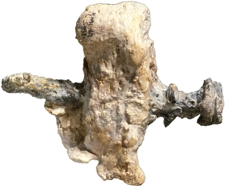 Crucifixion
Crucifixion
Throughout history, crucifixion has been one of the most painful and shameful ways to die. In 1968, Greek archaeologist Vassilios Tzaferis, found the first indisputable remains of a crucifixion victim. From an analysis of the skeletal remains of the victim, medical professionals from the Hadassah Medical School in Jerusalem were able to determine that the victim was a male. The most significant piece of the victim skeleton was his right heel bone. A large spike had been hammered through the right heel. Between the head of the nail and the heel bone, several fragments of olive wood were found lodged. Finding a heel bone with a several inch-long spike intact, along with the fragments of olive wood, is indicative of the fact that the feet of crucifixion victims were attached to the Cross using nails. (John 19:16-30)
Paulus Boundary Stone
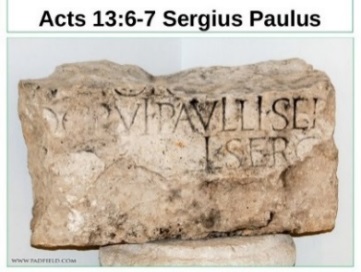 Paulus was the Proconsul of Cyprus under Claudius (1st century AD). Paulus is mentioned in (Acts 13:7) as residing in Paphos, a city in Cyprus. This is where Paul, accompanied by Barnabas and other companions, overcame the attempts to turn the proconsul away from the faith and converted Paulus Sergius to Christianity. The boundary stone of Claudius mentioning Sergius was discovered in 1887.
Paulus was the Proconsul of Cyprus under Claudius (1st century AD). Paulus is mentioned in (Acts 13:7) as residing in Paphos, a city in Cyprus. This is where Paul, accompanied by Barnabas and other companions, overcame the attempts to turn the proconsul away from the faith and converted Paulus Sergius to Christianity. The boundary stone of Claudius mentioning Sergius was discovered in 1887.
The Pool of Siloam
 In (John 9), Jesus encountered a man born blind. Jesus spat on the ground, made mud, placed it on the man’s eyes, and told him to go “wash in the pool of Siloam.” The Siloam Pool has long been considered a sacred Christian site. Traditionally, the Christian site of the Siloam Pool was the pool built by the Byzantine empress Eudocia (c. 400–460 A.D.) to commemorate the miracle recounted in the New Testament. However, the exact location of the original pool as it existed during the time of Jesus remained a mystery until June 2004. During construction work to repair a large water pipe south of Jerusalem’s Temple Mount, at the southern end of the ridge known as the City of David, archaeologists Ronny Reich and Eli Shukron identified two ancient stone steps. Further excavation revealed that they were part of a monumental pool from the Second Temple period, the period in which Jesus lived. The structure discovered was 225 feet long, with corners that are slightly greater than 90 degrees with the widening end oriented toward Tyropoeon valley. The Siloam Pool is adjacent to the area in the ancient City of David (Jerusalem) known as the King’s Garden and is just southeast of the remains of the fifth-century church and pool traditionally believed to be the sacred Christian site.
In (John 9), Jesus encountered a man born blind. Jesus spat on the ground, made mud, placed it on the man’s eyes, and told him to go “wash in the pool of Siloam.” The Siloam Pool has long been considered a sacred Christian site. Traditionally, the Christian site of the Siloam Pool was the pool built by the Byzantine empress Eudocia (c. 400–460 A.D.) to commemorate the miracle recounted in the New Testament. However, the exact location of the original pool as it existed during the time of Jesus remained a mystery until June 2004. During construction work to repair a large water pipe south of Jerusalem’s Temple Mount, at the southern end of the ridge known as the City of David, archaeologists Ronny Reich and Eli Shukron identified two ancient stone steps. Further excavation revealed that they were part of a monumental pool from the Second Temple period, the period in which Jesus lived. The structure discovered was 225 feet long, with corners that are slightly greater than 90 degrees with the widening end oriented toward Tyropoeon valley. The Siloam Pool is adjacent to the area in the ancient City of David (Jerusalem) known as the King’s Garden and is just southeast of the remains of the fifth-century church and pool traditionally believed to be the sacred Christian site.
“I tell you, if these were silent, the stones would shout out.” Jesus Christ (Luke 19)
Sources:
http://www.equip.org/article/biblical-archaeology-factual-evidence-to-support-the-historicity-of-the-bible/
http://www.smithsonianmag.com
http://apologeticspress.org/apcontent.aspx?category=13&article=1420
http://www.biblicalarchaeology.org/daily/biblical-sites-places/biblical-archaeology-sites/the-siloam-pool-where-jesus-healed-the-blind-man/
http://www.biblicalarchaeology.org/ (Israel Antiquities Authority)

